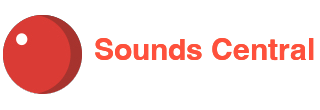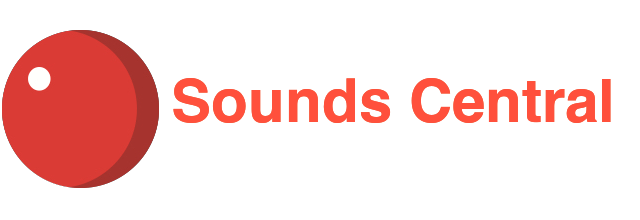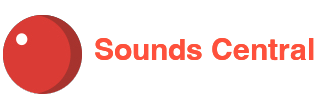Spareness, rigor, and a sense of experiment is what Brian Eno appreciated about a lot of West German music from the early Seventies. The stoic, almost machine like drumming of many tunes subsumed these qualities and became the hallmark of a new sound that the British music press called Krautrock.

It was different from British pop or American rock, correlated with the German mentality, and – most importantly – had nothing to do with the horrible Nazi past that had ended not so long ago. In fact, most Krautrock music was not not rock at all, even if the bands used the same equipment as rock bands.
In was in Düsseldorf that Kraftwerk approached their signature sound at the beginning of the decade. Their former drummer Klaus Dinger founded La Düsseldorf, and Wolfgang Riechmann, whose sound made machines express longing, was also active in the Rhine city.
However, much of the musical experimentation took place in a rural setting. In 1971, Faust recorded in their newly built studio and home in a former school building in the small village of Wümme near Hamburg.
In the same year, Cluster members Dieter Moebius and Hans-Joachim Roedelius had moved from West Berlin to a remote old farmhouse located in Lower Saxony‘s Forst. The influence of the Weser Upland’s lovely landscape on the duo’s rhythmic, spacey and playful electronic music is clearly audible.
After helping Cluster out with equipment like Farfisa instruments, a four-track recorder, and a drum machine, Michael Rother of Neu! joined the band and they became Harmonia – three individuals with shared ideas about living freely and being independent of record companies.

With a similar mindset, Kalacakra were active in Duisburg’s seedy port district Ruhrort. The duo had turned its curiosity about the spiritual promises of the Indian subcontinent into crude music in an improvised studio in an attic and self-released the LP Crawling To Lhasa in an edition of 1,000 copies.
West Germany’s vibrant experimental music scene in the 1970s piqued the curiosity of international artists eager to collaborate. After escaping a California prison in 1970, LSD advocate Timothy Leary met up with West Berlin’s free-form improvisers Ash Ra Tempel in his Swiss exile to record the ultimate psychedelic trip. And in 1976 Brian Eno visited Harmonia in Forst. Since the band had already decided to break up, the meeting was merely an exchange of ideas, with no plan for an album.
Around the world, people were pleasantly surprised by the curiosity, originality and friendliness of the young West German musicians; however, in the seclusion of their home country, most of their music played no role. To this day, names like Hans-Joachim Roedelius, Klaus Dinger or Werner ‘Zappi’ Diermaier are not part of the German collective memory.
45 minutes with Cluster, Faust, Harmonia 76, Wolfgang Riechmann and others.
Featured cover art: Riechmann – Wunderbar
Listen also to
Sekt oder Karies – West Germany in the 80s
Playlist ‘Proper Krauts’
Faust – Untitled
From the library of private tapes with material recorded spontaneously in the band’s studio and home in Wümme – initially not intended for release and with no postproduction applied. (1973, Virgin)
Can – TV Spot
Recorded in Can’s studio in Nörvenich castle near Cologne and discarded for an album release at the time of production. (1971, United Artists Records / Re: Spoon Records)
Kraftwerk – Tongebirge
With a quite interplay of Minimoog and flute, the Düsseldorf band approached its signature electronic sound. (1973, Philips)
Kalacakra – Jaceline
Rehearsed in an improvised studio in an attic in Duisburg. (1972, self-released / Re: Garden Of Delights)
Timothy Leary & Ash Ra Tempel – Downtown
LSD advocate Timothy Leary meets West Berlin free-form improvisers Ash Ra Tempel to record the ultimate psychedelic trip. (1972, Die Kosmischen Kuriere)
Cluster – Marzipan
Rhythmic, spacey and playful electronic music, created under the impression of the Weser Uplands’ lovely landscape. (1974, Brain)
Harmonia – Tiki-Taka At Harmonia Studio In Forst
After Michael Rother from Neu! joined Cluster, the band became Harmonia – three individuals with common ideas of living freely and being independent from record companies. (1975, Grönland Records)
Riechmann – Wunderbar
Unfortunately, Wolfgang Riechmann could not see his debut album in the stores. Prior to its release he was stabbed in the old town of Düsseldorf and died shortly after. (1978, Sky Records)
La Düsseldorf – Rheinita
Rheinita is a reference to Klaus Dinger’s former love Anita Heedman and the Rhine. The cheerful, over-the-top track reached #3 in the German music charts. (1978, Strand)
Harmonia 76 – Les Demoiselles
When Brian Eno came to Forst in 1976, Harmonia had already decided to split up. The meeting is only about recording the exchange of ideas, with no plan for an album. (1976, S3)




